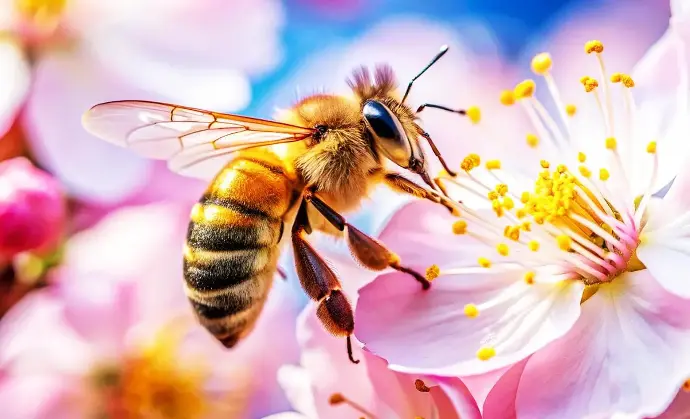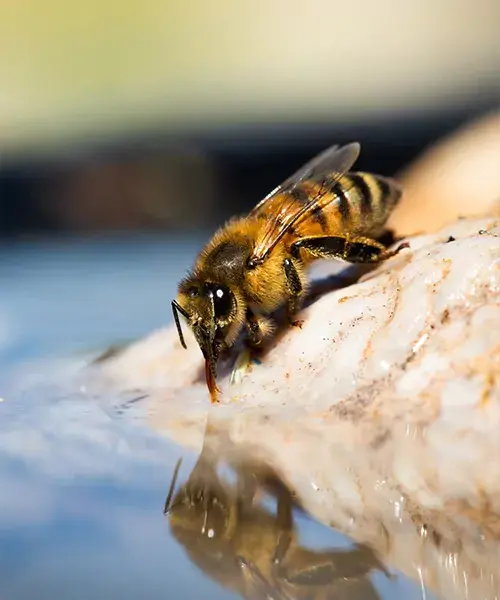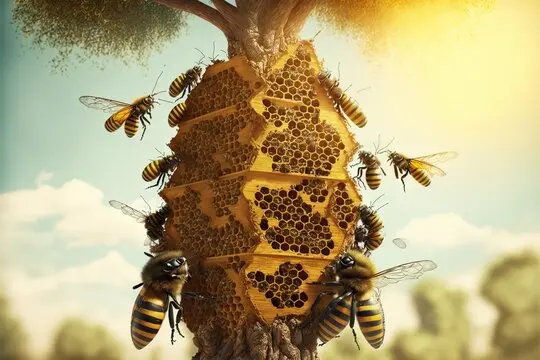Nature’s Tiny Architects: Celebrating the Vital Role of Honey Bees in Our Ecosystem!

Honey Bees (
Apis species
)
Size: 1.2–1.6 cm (adult)
Color: Golden-brown with black bands
Body: Compact and hairy, aiding in pollen collection
Wings: Transparent, neatly folded when at rest
Eyes: Large, compound, and oval-shaped
Antennae: Long and segmented, used for communication and sensing
- Flight pattern is direct, often towards flowers or hives
- Produces honey and wax, unique to their species

Feeding Preferences
Honey bees primarily seek out sweet, nectar-rich flowers to sustain their energy needs and collect pollen, which serves as a protein source for the colony. In urban settings, they are drawn to ornamental plants, flowering trees, and gardens. They may also visit fruit stalls or sugary spills in open areas, especially if natural sources are limited. Their efficient foraging behavior allows them to gather resources even in densely constructed environments, contributing to the pollination of urban flora.

Habitat
Honey bees thrive in areas where flowering plants are abundant, even in densely populated settings. They often establish their colonies in tree cavities, building crevices, or man-made structures that provide shelter and proximity to food sources. Gardens, balconies with potted plants, and urban parks are common foraging grounds. In modern settings, they are also found in rooftop hives maintained by enthusiasts. Their adaptability allows them to coexist in both green spaces and the built environment, making them vital contributors to pollination even in cities.

UPM's AIR Approach for Honey Bees:
- Assess: Inspect your property for honey bee activity, particularly around eaves, wall cavities, and trees. Assess the situation to determine if relocation or removal is necessary.
- Implement: If a hive needs to be removed, contact a professional beekeeper or pest control service specializing in honey bee relocation. Avoid using harmful chemicals to protect the bees' role as pollinators.
- Review: After hive removal, regularly monitor the area to ensure no new colonies are forming. Take preventive measures, such as sealing entry points and avoiding attracting bees with open food or sweet scents.
Frequently Asked Questions
While they rely heavily on flowers for nectar and pollen, supplementary feeding by beekeepers can help them survive during scarcity.
They are essential for pollinating fruits, vegetables, and other crops grown in urban gardens and small-scale farms.
Yes, swarming can occur as part of their natural reproduction process. It’s best to contact a beekeeper or pest control expert for safe removal.
They can forage up to 5 kilometers from their hive, searching for nectar and pollen.
Unlike some insects, honey bees are less likely to be drawn to lights, as they are active during daylight hours.
Air pollution and pesticides can harm their health and interfere with their foraging and navigation abilities.
Yes, by planting bee-friendly plants and avoiding the use of harmful chemicals, you can support their activity without risks.